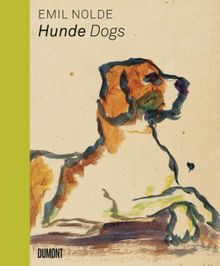ARTIST MONOGRAPHS
|
|
in stock $20.00 Free Shipping UPS GROUND IN THE CONTINENTAL U.S. |
 Emil Nolde: Memory Games
Emil Nolde: Memory Games
Published by DuMont.
Find the match to every card you turn over; this card game will sharpen your attention to detail, enhance spatial memory and encourage you to look closely at Nolde’s beautiful paintings.
The memory game comes complete with a foldout booklet introducing the artist and the works included in the game.
Nolde began to paint scenes of flowers in watercolors around 1918. “The color of the flowers drew me magnetically to them, and suddenly I was painting,” remembered Nolde. “I produced my first little garden painting.” Nolde continued to be inspired by flowers and gardens until the end of his career, painting single blooms, beautifully composed still lifes, gardens and flowering fields.
PUBLISHER
DuMont
BOOK FORMAT
Other Media, 6 x 6 in. / 64 cards.
PUBLISHING STATUS
Pub Date 7/25/2017
Active
DISTRIBUTION
D.A.P. Exclusive
Catalog: FALL 2017 p. 129
PRODUCT DETAILS
ISBN 9783832199210 SDNR50
List Price: $19.95 CAD $27.95
AVAILABILITY
In stock
in stock $19.95 Free Shipping UPS GROUND IN THE CONTINENTAL U.S. |
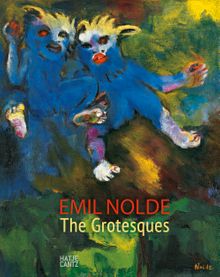 Emil Nolde: The Grotesques
Emil Nolde: The Grotesques
Published by Hatje Cantz.
Edited by Ulrich Luckhardt, Christian Ring. Text by Caroline Dieterich, Daniel J. Schreiber, Roman Zieglgänsberger.
Emil Nolde (1867–1956) is famous for his dramatic ocean views and colorful flower gardens, but his love of the fantastical and grotesque has received less attention. Yet it is clear from his autobiography and his letters that they had a significant impact on his art. Alongside his first oil painting, “Bergriesen” (“Mountain Giants,” 1895–96), his alpine postcards of this period, in which the Swiss mountains appear as bizarre human physiognomies, also convey his fascination with the fantastical. His rejection of realism in favor of a grotesque, alternative world can be seen throughout his oeuvre, from its beginnings to the Grotesken (1905) and watercolors from 1918–19, to the years under the Nazis when he was forbidden to practice his profession. This catalog, which includes works never before shown, is also the first to emphasize this fascinating side of the great painter and water-colorist.
PUBLISHER
Hatje Cantz
BOOK FORMAT
Hardcover, 9.5 x 12.25 in. / 176 pgs / 130 color.
PUBLISHING STATUS
Pub Date 7/25/2017
Active
DISTRIBUTION
D.A.P. Exclusive
Catalog: FALL 2017 p. 129
PRODUCT DETAILS
ISBN 9783775742832 TRADE
List Price: $29.95 CAD $39.95
AVAILABILITY
Out of stock
STATUS: Out of stock Temporarily out of stock pending additional inventory. |
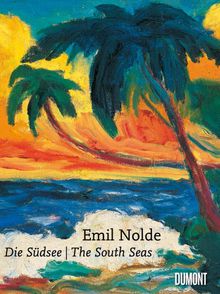 Emil Nolde: The South Seas
Emil Nolde: The South Seas
Published by DuMont.
Edited by Christian Ring.
In October 1913 the German Expressionist artist Emil Nolde (1867–1956) and his wife, Danish actress Ada Vilstrup, joined a government-sponsored expedition to German New Guinea, traveling by way of Siberia, Korea, Japan, China and the Philippines. Nolde had a lifelong fascination with the art of non-European cultures, admiring in particular qualities of directness and expressiveness that he found in their arts.
During this yearlong trip Nolde constantly drew and painted what he saw around him, principally lush, intensely colorful tropical scenes and portraits of indigenous peoples. This little gift book presents around 40 of the now famous landscapes and portraits that Nolde created during his travels.
PUBLISHER
DuMont
BOOK FORMAT
Hardcover, 6 x 8 in. / 96 pgs / 40 color / 10 bw.
PUBLISHING STATUS
Pub Date 7/25/2017
Active
DISTRIBUTION
D.A.P. Exclusive
Catalog: FALL 2017 p. 129
PRODUCT DETAILS
ISBN 9783832199203 TRADE
List Price: $19.00 CAD $26.50
AVAILABILITY
In stock
in stock $19.00 Free Shipping UPS GROUND IN THE CONTINENTAL U.S. |
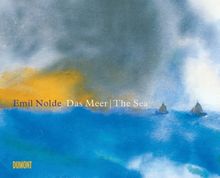 Emil Nolde: The Sea
Emil Nolde: The Sea
Published by DuMont.
Edited by Christian Ring.
PUBLISHER
DuMont
BOOK FORMAT
Hardcover, 7.25 x 5.75 in. / 80 pgs / 30 color.
PUBLISHING STATUS
Pub Date 9/29/2015
Active
DISTRIBUTION
D.A.P. Exclusive
Catalog: FALL 2015 p. 155
PRODUCT DETAILS
ISBN 9783832194925 TRADE
List Price: $24.95 CAD $33.95
AVAILABILITY
Out of stock
STATUS: Out of stock Temporarily out of stock pending additional inventory. |
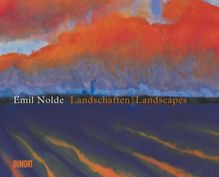 Emil Nolde: Landscapes
Emil Nolde: Landscapes
Published by DuMont.
Text by Christian Ring.
PUBLISHER
DuMont
BOOK FORMAT
Hardcover, 7.25 x 5.75 in. / 80 pgs / 30 color.
PUBLISHING STATUS
Pub Date 3/24/2015
Active
DISTRIBUTION
D.A.P. Exclusive
Catalog: SPRING 2015 p. 152
PRODUCT DETAILS
ISBN 9783832194888 TRADE
List Price: $24.95 CAD $33.95
AVAILABILITY
Out of stock
STATUS: Out of stock Temporarily out of stock pending additional inventory. |
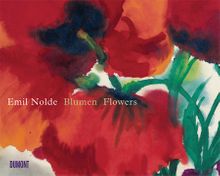 Emil Nolde: Flowers
Emil Nolde: Flowers
Published by DuMont.
Edited by Christian Ring.
PUBLISHER
DuMont
BOOK FORMAT
Hardcover, 7.25 x 5.75 in. / 80 pgs / 30 color.
PUBLISHING STATUS
Pub Date 2/24/2015
Active
DISTRIBUTION
D.A.P. Exclusive
Catalog: FALL 2014 p. 153
PRODUCT DETAILS
ISBN 9783832194826 TRADE
List Price: $24.95 CAD $33.95
AVAILABILITY
Out of stock
STATUS: Out of stock Temporarily out of stock pending additional inventory. |
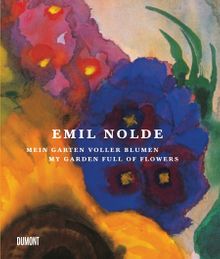 Emil Nolde: My Garden Full of Flowers
Emil Nolde: My Garden Full of Flowers
Published by DuMont.
Edited by Manfred Reuther.
PUBLISHER
DuMont
BOOK FORMAT
Hardcover, 9.5 x 11.75 in. / 134 pgs / 70 color / 20 bw.
PUBLISHING STATUS
Pub Date 2/24/2015
Active
DISTRIBUTION
D.A.P. Exclusive
Catalog: FALL 2014 p. 153
PRODUCT DETAILS
ISBN 9783832194833 TRADE
List Price: $45.00 CAD $60.00
AVAILABILITY
Out of stock
STATUS: Out of stock Temporarily out of stock pending additional inventory. |
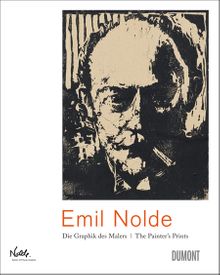 Emil Nolde: The Painter's Prints
Emil Nolde: The Painter's Prints
Published by DuMont.
Edited by Manfred Reuther, Christian Ring.
PUBLISHER
DuMont
BOOK FORMAT
Hardcover, 9.75 x 11.5 in. / 152 pgs / 47 color / 56 bw.
PUBLISHING STATUS
Pub Date 4/30/2013
Active
DISTRIBUTION
D.A.P. Exclusive
Catalog: SPRING 2013 p. 189
PRODUCT DETAILS
ISBN 9783832194666 TRADE
List Price: $45.00 CAD $60.00
AVAILABILITY
Out of stock
STATUS: Out of stock Temporarily out of stock pending additional inventory. |
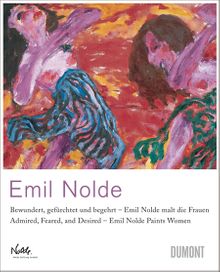 Emil Nolde Paints Women
Emil Nolde Paints Women
Admired, Feared, and Desired
Published by DuMont.
Edited by Manfred Reuther. Text by Joerg Garbrecht.
PUBLISHER
DuMont
BOOK FORMAT
Hardcover, 9.75 x 11.5 in. / 144 pgs / 97 color / 7 bw.
PUBLISHING STATUS
Pub Date 2/28/2011
Out of print
DISTRIBUTION
D.A.P. Exclusive
Catalog: SPRING 2011 p. 144
PRODUCT DETAILS
ISBN 9783832193256 TRADE
List Price: $45.00 CAD $60.00
AVAILABILITY
Not available
STATUS: Out of print | 00/00/00 For assistance locating a copy, please see our list of recommended out of print specialists |
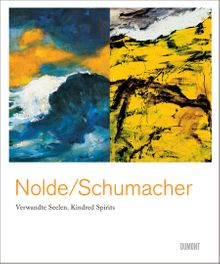 Emil Nolde & Emil Schumacher: Kindred Spirits
Emil Nolde & Emil Schumacher: Kindred Spirits
Published by DuMont.
Edited by Alexander Klar, Manfred Reuther, Ulrich Schumacher.
PUBLISHER
DuMont
BOOK FORMAT
Hardcover, 9.75 x 11.75 in. / 144 pgs / 95 color / 17 bw.
PUBLISHING STATUS
Pub Date 2/28/2011
Active
DISTRIBUTION
D.A.P. Exclusive
Catalog: SPRING 2011 p. 144
PRODUCT DETAILS
ISBN 9783832193515 TRADE
List Price: $45.00 CAD $60.00
AVAILABILITY
In stock
in stock $45.00 Free Shipping UPS GROUND IN THE CONTINENTAL U.S. |
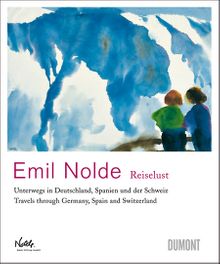 Emil Nolde: Wanderlust
Emil Nolde: Wanderlust
Travels through Germany, Spain and Switzerland
Published by DuMont.
Edited by Andreas Fluck.
PUBLISHER
DuMont
BOOK FORMAT
Hardcover, 10 x 11.75 in. / 160 pgs / 122 color / 9 bw.
PUBLISHING STATUS
Pub Date 7/31/2010
Out of print
DISTRIBUTION
D.A.P. Exclusive
Catalog: FALL 2010 p. 105
PRODUCT DETAILS
ISBN 9783832192822 TRADE
List Price: $44.95 CAD $60.00
AVAILABILITY
Not available
STATUS: Out of print | 00/00/00 For assistance locating a copy, please see our list of recommended out of print specialists |
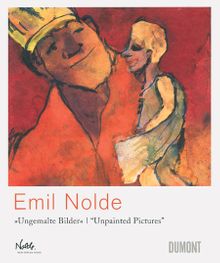 Emil Nolde: Unpainted Pictures
Emil Nolde: Unpainted Pictures
Published by DuMont.
Text by Jörg Garbrecht, Manfred Reuther.
PUBLISHER
DuMont
BOOK FORMAT
Hardcover, 9.75 x 11.5 in. / 152 pgs / 107 color / 10 bw.
PUBLISHING STATUS
Pub Date 2/28/2010
Out of print
DISTRIBUTION
D.A.P. Exclusive
Catalog: SPRING 2010 p. 68
PRODUCT DETAILS
ISBN 9783832192341 TRADE
List Price: $44.95 CAD $55.00
AVAILABILITY
Not available
STATUS: Out of print | 00/00/00 For assistance locating a copy, please see our list of recommended out of print specialists |
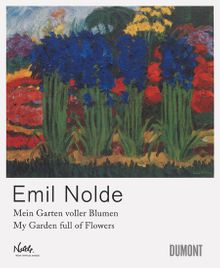 Emil Nolde: My Garden Full of Flowers
Emil Nolde: My Garden Full of Flowers
Published by DuMont.
Text by Manfred Reuther.
PUBLISHER
DuMont
BOOK FORMAT
Hardcover, 9.5 x 11.75 in. / 140 pgs / 70 color.
PUBLISHING STATUS
Pub Date 2/28/2010
Out of print
DISTRIBUTION
D.A.P. Exclusive
Catalog: SPRING 2010 p. 68
PRODUCT DETAILS
ISBN 9783832191894 TRADE
List Price: $44.95 CAD $60.00
AVAILABILITY
Not available
STATUS: Out of print | 00/00/00 For assistance locating a copy, please see our list of recommended out of print specialists |
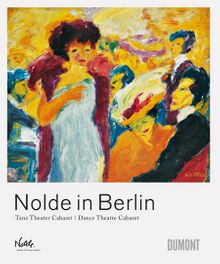 Nolde in Berlin: Dance Theatre Cabaret
Nolde in Berlin: Dance Theatre Cabaret
Published by DuMont.
Text by Manfred Reuther.
PUBLISHER
DuMont
BOOK FORMAT
Hardcover, 10 x 11.5 in. / 144 pgs / 84 color.
PUBLISHING STATUS
Pub Date 2/28/2010
Out of print
DISTRIBUTION
D.A.P. Exclusive
Catalog: SPRING 2010 p. 164
PRODUCT DETAILS
ISBN 9783832190507 TRADE
List Price: $44.95 CAD $60.00
AVAILABILITY
Not available
STATUS: Out of print | 00/00/00 For assistance locating a copy, please see our list of recommended out of print specialists |
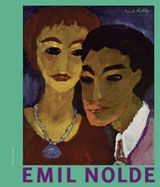 Emil Nolde: Eye Contact
Emil Nolde: Eye Contact
Early Portraits
Published by Hatje Cantz.
Edited by Brigitte Reinhardt. Essays by Tilman Osterwold, Manfred Reuther, et al.
PUBLISHER
Hatje Cantz
BOOK FORMAT
Hardcover, 9.75 x 11.5 in. / 176 pgs / 60 color / 10 bw.
PUBLISHING STATUS
Pub Date 6/15/2005
Out of print
DISTRIBUTION
D.A.P. Exclusive
Catalog: SPRING 2005 p. 45
PRODUCT DETAILS
ISBN 9783775715461 TRADE
List Price: $45.00 CAD $55.00
AVAILABILITY
Not available
STATUS: Out of print | 11/25/2008 For assistance locating a copy, please see our list of recommended out of print specialists |
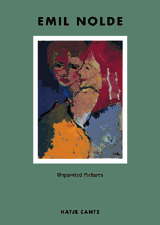 Emil Nolde: Unpainted Pictures
Emil Nolde: Unpainted Pictures
Published by Hatje Cantz.
Edited by Tilman Osterwold. Essays by Thomas Knubben, Jolanthe Nolde, Manfred Reuther,
PUBLISHER
Hatje Cantz
BOOK FORMAT
Hardcover, 7 x 9.5 in. / 160 pgs / 104 color / 2 bw.
PUBLISHING STATUS
Pub Date 2/2/2001
Out of print
DISTRIBUTION
D.A.P. Exclusive
Catalog: SPRING 2001
PRODUCT DETAILS
ISBN 9783775709958 TRADE
List Price: $30.00 CAD $40.00
AVAILABILITY
Not available
STATUS: Out of print | 00/00/00 For assistance locating a copy, please see our list of recommended out of print specialists |

